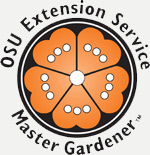Home
Who we are
What we do
Resources
- Online Resources
- Frequently Asked Questions
- OSU Gardening Encyclopedia
- OSU Gardening Calendar
- 10–Minute University™
Community & Urban Horticulture
MG Community
- MG Referral Forum
- Moodle
- Newsletter
- Forms
- Office Info Binder
- Contacts
- CERVIS Instructions
- CERVIS Event Registration
- CERVIS Administrator Login

OSU Gardening Calendar
June
Planning
- Construct trellises for tomatoes, cucumbers, pole beans, and vining ornamentals.
Maintenance and Clean Up
- Prune lilacs, forsythia, rhododendrons, and azaleas after blooming.
- Fertilize vegetable garden 1 month after plants emerge by side dressing alongside rows.
- Harvest thinnings from new plantings of lettuce, onion, and chard.
- Pick ripe strawberries regularly to avoid fruit-rotting diseases.
- Use organic mulches to conserve soil moisture in ornamental beds. An inch or two of sawdust, barkdust, or composted leaves will minimize loss of water through evaporation.
- After normal fruit drop of apples, pears and peaches in June, consider thinning the remainder to produce a larger crop of fruit.
- Make sure raised beds receive enough water for plants to avoid drought stress. If a green lawn is desired, make sure lawn areas are receiving adequate water (approximately 0.5 to 1.5 inches per week from June through August). Deep watering less often is more effective than frequent shallow watering. Measure your water use by placing an empty tuna can where your irrigation water lands.
- (Mid-June): If green lawns are being maintained through the summer, apply 1 lb. nitrogen per 1,000 sq.ft. to lawns.
- Central Oregon and higher elevations of eastern Oregon: Manage weeds while they are small and actively growing with light cultivation or herbicides. Once the weed has gone to bud, herbicides are less effective.
- Central Oregon and higher elevations of Eastern Oregon: Frost can still be a concern during cold nights. Protect young vegetables from frost by having row cover (frost cloth) on hand. Place over crops when needed. Use season extenders, such as walls of water, around tomatoes and other tender plants.
Planting/Propagation
- Plant dahlias and gladioli.
Pest Monitoring and Management
- First week: spray cherry trees for cherry fruit fly, as necessary, if fruit is ripening.
- First week: spray for codling moth in apple and pear trees, as necessary. Continue use of pheromone traps for insect pest detection.
- Learn to identify beneficial insects and plant some insectary plants (e.g. Alyssum, Phacelia, coriander, candytuft, sunflower, yarrow, dill) to attract them to your garden. Check with local nurseries for best selections. See PNW550 (Encouraging Beneficial Insects in Your Garden) for more information.
- Blossoms on squash and cucumbers begin to drop: this is nothing to worry about. Cherries may also drop fruit: this is not a major concern.
- Monitor azaleas, primroses and other broadleaf ornamentals for adult root weevils. Look for fresh evidence of feeding (notching at leaf edges). Try sticky trap products on plant trunks to trap adult weevils. Protect against damaging the bark by applying the sticky material on a 4-inch wide band of poly sheeting or burlap wrapped around the trunk. Mark plants now and manage root weevils with beneficial nematodes when soil temperatures are above 55°F. If root weevils are a consistent problem, consider removing plants and choosing resistant varieties. (See WSU Extension Publication EB0970E for list of rhododendrons exhibiting resistance to adult root weevil feeding)
- Control garden weeds by pulling, hoeing, or mulching.
- Control aphids on vegetables as needed by hosing off with water or by using insecticidal soap or a registered insecticide.
- Watch for 12-spotted beetles on beans and lettuce and cabbage worms or flea beetles in cole crops (cabbage, broccoli, Brussel sprouts). Remove the pests by hand or treat with registered pesticides.
- Spray peas as first pods form, if necessary, to control weevils.
- Birch trees dripping a sticky fluid from their leaves means that aphids are present. Control as needed.
- Use yellow sticky traps to monitor for cherry fruit fly. About 1 week after the first fly is caught, spray cherries at appropriate intervals.
- Last week: second spray for codling moth in apple and pear trees, as necessary.
- Central Oregon and higher elevations of eastern Oregon: Manage weeds while they are small and actively growing with light cultivation or herbicides. Once the weed has gone to bud, herbicides are less effective.
Houseplants and Indoor Gardening
- Move houseplants outdoors for cleaning, grooming, repotting and summer growth.
Download a PDF of the June Calendar for easy printing.
Updated September 10, 2009.
Problems, questions, or suggestions? Contact: webmaster@metromastergardeners.org

